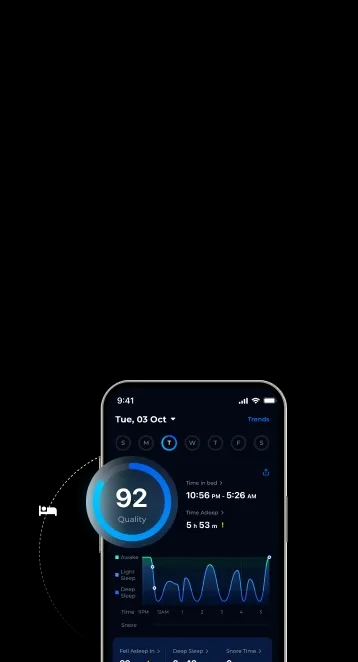


Have you ever experienced trouble falling asleep or staying asleep that you wondered if it could be a sign of a sleep disorder like sleep apnea? Ever wondered how you could get it tested? Well, polysomnography is a non-invasive test that is commonly used by doctors to diagnose sleep disorders.
Find out more in-depth on what polysomnography is, its purpose, and the risks that come with doing one.
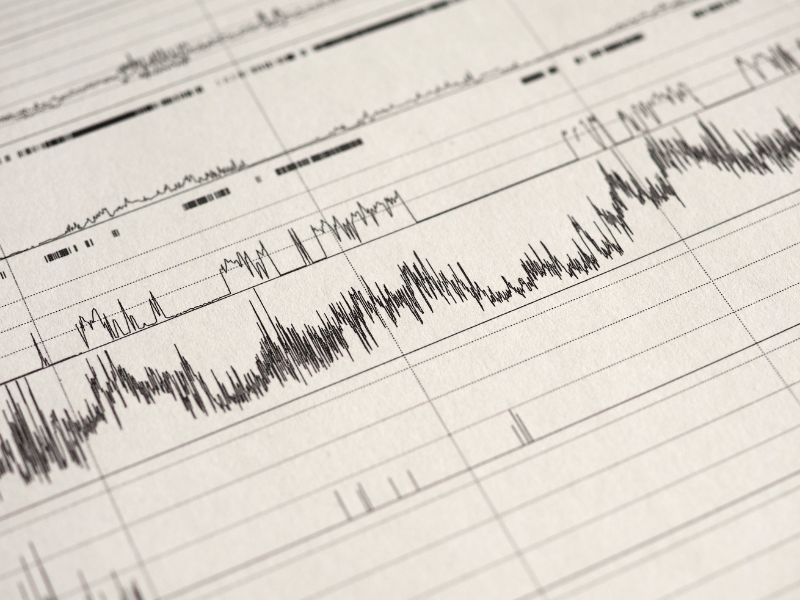
Polysomnography (PSG), also known as sleep study is a test that is used to diagnose sleep disorders. It is usually conducted when you are asleep and involves monitoring your brain waves, blood oxygen levels, heart rate, breathing pattern, and eye and leg movements [1].
Electroencephalogram (EEG), electrooculography (EOG), and electrocardiogram are used to record these physiological activities.
Polysomnography is usually used by doctors to diagnose sleep-related breathing disorders such as obstructive sleep apnea (OSA), and central sleep apnea [2].
It can also be used to evaluate and diagnose other sleep disorders, such as:

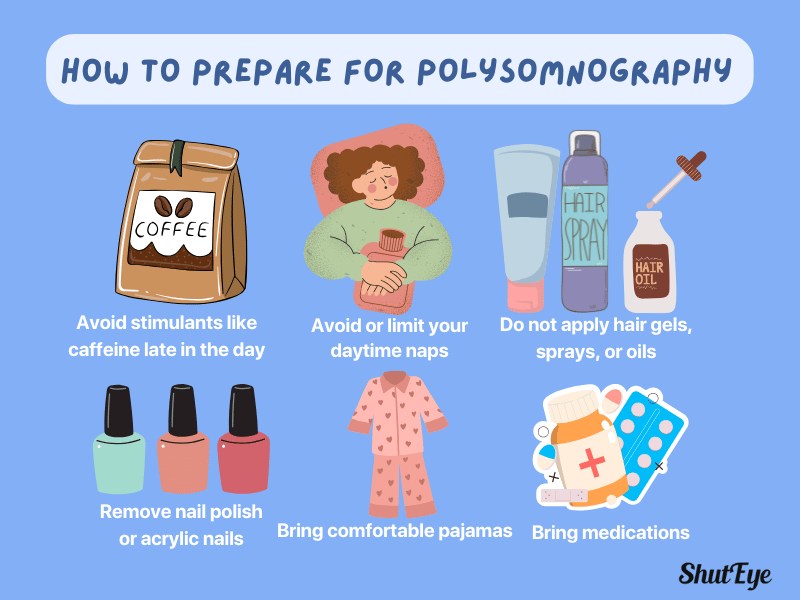
Normally, doing a sleep study requires you to stay overnight in a sleep lab at a special sleep center. However, it can also be done at home if your doctor has ordered it.
Preparing for polysomnography requires you to follow good sleep hygiene practices.
Here are some important tips to follow on the day of your study [3]:
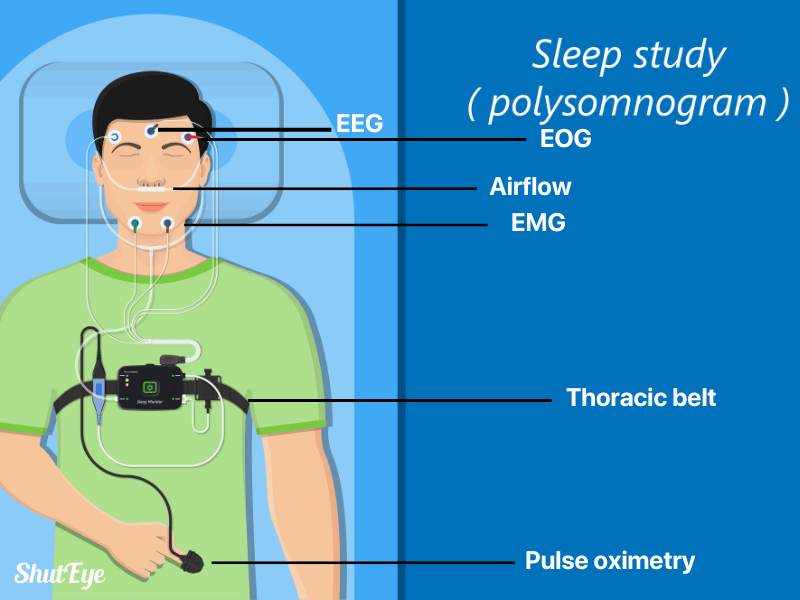
A polysomnography (PSG) is performed in the following way [4]:
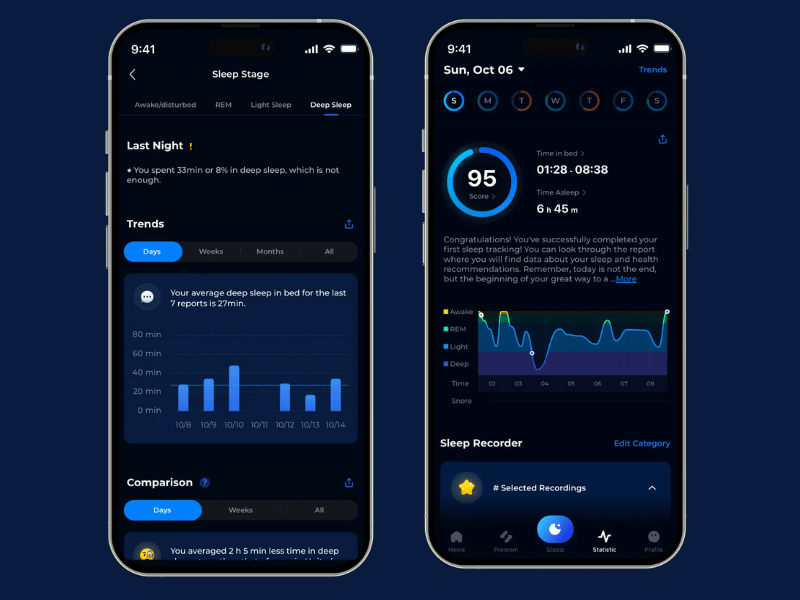
While polysomnography remains the golden standard for diagnosing sleep disorders, the ShutEye® app also recognizes if you might have suspected sleep disorders through advanced sleep-tracking principles.
Through collaboration with sleep clinics worldwide and comparative tests done against the PSG method, the app allows you to track essential sleep metrics such as:
Additionally, the app also offers a full sleep report based on your nightly sleep results which can be shared with a sleep doctor to determine if a full in-depth sleep study is needed.
A sleep study is made up of many different components and they all have a significant impact on the interpretation of results.
During the study, one of the key elements tracked is the amount of apnea and hypopnea events that occur during each hour of sleep. An apnea event refers to the complete pause in breathing for at least 10 seconds whereas a hypopnea event refers to a reduction in breathing for at least 10 seconds.
The severity of sleep apnea is measured by the frequency of these events. Here’s a look at the definition of different severity levels:
Sleep arousal refers to the brief awakening from sleep. Apnea and hypopnea events may cause sleep arousal as the person tries to breathe properly. Arousals are often disruptive to sleep and may cause excessive daytime sleepiness.
Sleep efficiency is another parameter that refers to the percentage of time that a person sleeps compared to the time that they spend in bed. Normal sleep efficiency is considered to be 80% or more.
This refers to the amount of time that it takes for a person to fall asleep. If a person goes to bed at night and only falls asleep after 15 minutes, it means that the sleep latency is 15 minutes. If the sleep latency is more than 15 minutes, it may suggest difficulty falling asleep. If it is less than 5 minutes, it may suggest excessive sleepiness.
Sleep stages are also another element that is being tracked. There are four stages of sleep that we go through at night.
Stage 1 refers to the earliest stage of sleep or the light sleep stage. In this stage, it’s easy to wake up from, and 5% to 10% of the total sleep time is spent in this stage.
Stage 2 refers to a deeper sleep stage compared to stage 1. Usually, the body will start to prepare for deeper stages of sleep. 25% to 45% of sleep time is spent in this stage.
Stage 3 refers to the deep sleep stage. During this period, it is much more difficult to wake up. Around 20% to 25% of sleep time is spent here.
Stage 4 refers to the REM sleep stage or rapid eye movement sleep stage. This is when dreams tend to take place. 20% to 30% of sleep time is spent in this stage.
REM latency refers to the amount of time that a person takes to reach the REM sleep stage after falling asleep. Most people would achieve their first REM sleep 70 to 110 minutes after falling asleep.
Oxygen levels are also monitored using a pulse oximeter. Typically, a person who has sleep apnea or other medical history may have a much lower oxygen saturation level. The normal oxygen saturation level for a healthy adult is between 94% to 100%.
Periodic limb movements are defined as the jerking of the leg during sleep every 5 to 20 seconds. This parameter is used to assess the number of times that the leg has jerked during each hour of sleep.

Polysomnography test is a non-invasive and painless test. You should not face many risks doing one. People with sensitive skin should take note of potential skin irritation caused by the adhesive on the attached electrodes.
In conclusion, polysomnography is a tool that remains the gold standard for many doctors when it comes to diagnosing sleep disorders such as sleep apnea. It looks at various parameters such as brain waves, heart rate, breathing pattern, blood oxygen level, and eye and leg movements. It is the most accurate test to evaluate your sleep.
Another option for tracking your sleep is the ShutEye® app. While it is not as extensive as full polysomnography, it is considered more affordable and helps you to track your sleep cycles conveniently without leaving your house. Try it for free today!
Kumar, K. (2025) How Is Polysomnography Performed? [online]. Available at: https://www.medicinenet.com/how_is_polysomnography_performed/article.htm
Mayo Clinic (2025) Polysomnography (sleep study) [online]. Available at: https://www.mayoclinic.org/tests-procedures/polysomnography/about/pac-20394877
Rundo, J. V., & Downey, R., 3rd (2019). Polysomnography. Handbook of Clinical Neurology, 160, 381–392. [online]. Available at: https://doi.org/10.1016/B978-0-444-64032-1.00025-4
UCLA Health (2025) Preparing for a Sleep Study [online]. Available at: https://www.uclahealth.org/medical-services/sleep-disorders/patient-resources/patient-education/preparing-sleep-study#preparing